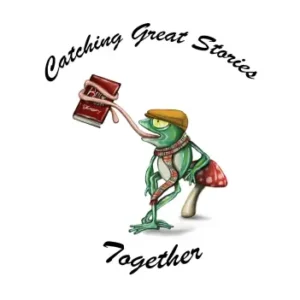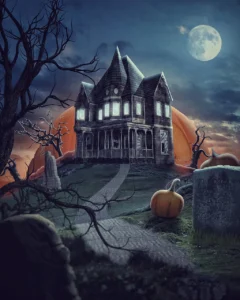
Can you believe Halloween is just a week away!
My sister and I always enjoyed the holiday season. For us, it begins October 1st and goes until January 1st. For me, I visit my local library at the beginning of October to see the new arrivals and to hang out with the classics. This year was no different. I’ve read at least 50 picture books over the past three weeks, and I’d like to share a few of my favorites. Maybe they will become favorites at YOUR house this Halloween!
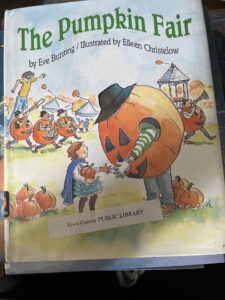
“A bouncy rhyme and delightful artwork bring this pumpkin fair to life. The young narrator is ecstatic to be at the local pumpkin fair, where pumpkins of every size are on display—and that’s not all! There’s pumpkin bowling, a pumpkin pull, and every sort of food you can imagine made from the orange stuff, from ice cream to stew. . . . Christelow’s good-natured watercolor-and-ink illustrations are filled with things to look at and laugh about, including a marching band in pumpkin suits. Keep this book around to read for autumn story hours—but you might want a piece of pumpkin pie when you’re done.”—ALA Booklist
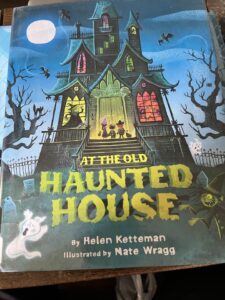
At the old haunted house
In a room with no sun
Lived a warty green witch
And her wee witchy one.
There are all kinds of creatures in the house: a big Ma monster and her wee monsters two, a scrawny black cat and her wee kittens three, a green Pa goblin and his wee goblins four, and more! Count along as the creatures prepare for the Halloween Fright. The text, written in the pattern of the popular poem “Over in the Meadow,” makes reading aloud fun, while the cinematic illustrations set the scene for an unforgettable romp through the old haunted house. Trick or treat!
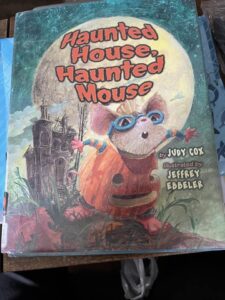
Mouse’s appetite leads him on a Halloween adventure when he hitches a ride in a trick-or-treat bag of candy and finds himself alone in a haunted house.
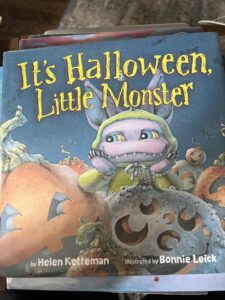
Little Monster is going trick-or-treating for the very first time. There are going to be all kinds of creatures about, like witches and vampires and zombies. And lots of spooky noises too! As Little Monster makes his way around the neighborhood, Papa is there to help guide him through his fears as they encounter one scary thing after another…until they reach the last house of the night. It’s the spookiest house of all, and?YIKES!?there might be a surprise waiting for them. Will Little Monster be brave?
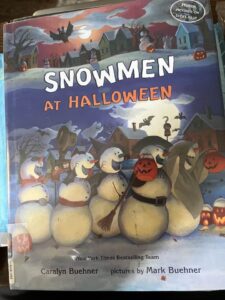
Have you ever built a snowman and discovered the next day that his grin has gotten a little crooked, or his tree-branch arms have moved? And you’ve wondered . . . what do snowmen do when we’re not watching?
After an early snowfall, a few kids build some snowmen before going trick-or-treating. And when the kids go off to bed, the snowmen have their own Halloween festival! There’s candy and apple-bobbing and costume contests and all sorts of autumn activities. When the kids wake up the next morning, the snowmen are gone . . . but they’ve left a very special message behind.
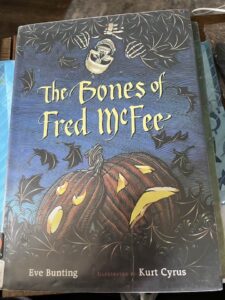
In this rhythmic story, an unsuspecting brother and sister bring a toy skeleton home from the harvest fair. They name it Fred McFee and hang it from a sycamore tree. Soon, eerie things begin to happen. And then on Halloween night, Fred vanishes!
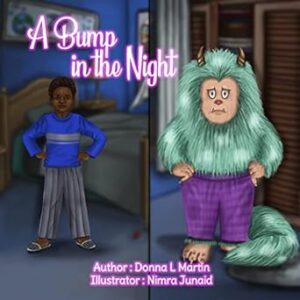
And my OWN contribution to this spooky season is my picture book…
“Jack is afraid of the THING in the closet. Monty is afraid of the LUMP in the bed. One day, boy and monster both decide they no longer want to be afraid of what hides in the dark. Both have a plan but will be surprised by what they discover during A BUMP IN THE NIGHT.”
*****************
![]()
Editor and author, Donna L Martin has been writing for over fifty years. Her genres include poetry, flash fiction, picture books, historical fiction and sport chapter books, young adult fantasy, memoir journals, and inspirational essays for anthologies. In 2010, her first story was traditionally published, and Donna has worked hard over the past several years to produce the best in children’s stories. In 2018, she received the rights back to her debut picture book and decided to open her own publishing house. Since 2018, Story Catcher Publishing has released several books in a variety of genres. Some of these books have gone on to win local awards and 5-star ratings from nationally recognized organizations. Beginning November 1st, 2023, Story Catcher Publishing will open its doors to query letters from new and established authors for a chance to work with our professional design team to bring their stories to life!
You can follow Donna on Facebook (www. facebook.com/donasdays), Twitter (www.twitter.com/donasdays), and Instagram (www.instagram.com/donasdays), or you can contact her via email at www.storycatcherpublishing.com
